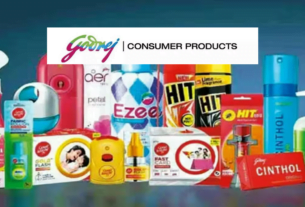Nifty FMCG rose 0.26% over the past one month, lowest among all the Nifty sectoral indices. High retail inflation and erratic monsoon this year are the significant contributors to the woes of the Indian fast moving consumer goods (FMCG) sector. Inflation trajectory and rainfall pattern and distribution influences rural FMCG revenue contribution in India. Rural India contributes nearly 40% of the FMCG revenue basket. All major FMCG companies except Dabur India, reported low single digit rural volume growth in Q1FY24. And with Brent crude crossing $95 price levels, FMCG companies are on tenterhooks again.
High crude prices to dent consumer sentiment, hit FMCG volumes
After 11 months, Brent crude price has again breached $ 95 levels. Higher fuel expenses curtail family budgets and subdues consumer sentiment. Low purchasing power of consumers adversely impacts volume offtake of FMCG products. Consumers prefer small packs, low priced local brands and unbranded products to control their family budgets.
Essential food items and other necessities are given higher preference than discretionary products. For instance, shampoos, scented hair oils, cosmetics witness lower sales growth amid higher inflationary scenarios. As consumers restrain expenditure, FMCG volume growth falls especially in the rural areas witnessing higher impact of inflation compared to urban regions. Thus, the FMCG sector is expected to witness margin contraction in the near future as crude rises its ugly head again, derailing volume growth in the upcoming festive season.
But how is the FMCG sector so significantly affected by higher crude prices? Well, it’s a double-edged sword for the FMCG sector as not only lower volumes but increase in operating expenditure hurts margins and profitability of the FMCG sector. To manufacture detergents, alkyl benzene is required and to package it and sell it to the end consumer, polyethylene is utilized, both are crude derivatives. On the whole, the FMCG sector’s homecare and personal care raw material basket is adversely affected by rising crude prices. To name a few more crude derivatives, paraffin for hair oils and creams, propylene glycol used for shampoo, toluene and phenoxyethanol and parfum used for cosmetics. Packaging costs constitute roughly 10-12% of total input costs of a FMCG company. To gather high volume growth, operating costs will further escalate as companies focus on small packs or low unit packs (LUP).
High Crude Prices Will Impact Margins, reduce A&P spends
After unprecedented commodity inflation last year, 2023 witnessed improvement in operating margins as commodity prices softened. The March and June 2023 Quarter saw improvement in operating margins. Crude prices above $90 started falling from November 2022 and touched $ 70 levels in June 2023. With margin expansion and higher bottom-line, FMCG companies increased their advertisement and promotional (A&P) expenditure. All major FMCG companies, HUL, Dabur and Marico have increased their A&P spends leading to high competitive intensity battling for higher volumes in an inflation hit scenario. Speaking on HUL’s stepped up A&P spends, Ritesh Tiwari, CFO, HUL said, “A&P spends in this quarter were higher by 110 basis points (bps) in Q1FY24 versus March quarter 2023. This is an additional investment of almost Rs. 200 crores.” But with crude threat raising its ugly head again and spoking inflation in other commodities, margin expansion in the upcoming quarters looks restrained. And A&P spends will have to be controlled to maintain margins. FMCG companies will have to increase prices and reduce grammage to drive value growth as they did in FY23. Volumes will take a hit again. But how long can crude sustain its present rally? The next US Fed meeting is on November 1, 2023. Let’s keep our fingers crossed.




